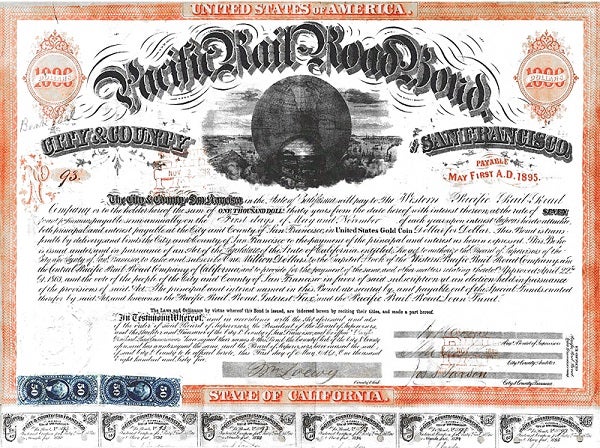
|
Long before there were corporations that issued shares of stock for investment, there was the systematic use of debt to raise money. Debt involves borrowing money with the promise to pay it back in full, along with interest over time. The guaranty assuring that promise is known as a bond. In other words, bonds represent debt obligations.
Bonds have been around for millennia. The ancient Mesopotomia city of Ur in what is today Iraq had a bond market around 2400 B.C., guaranteeing repayment for borrowed grain. Kings, and later democratic governments often borrowed by issuing bonds to fund wars and territorial expansion. In modern times, governments still borrow to undertake projects, but there is also a thriving market for bonds issued by corporations, who borrow for expanding profitable undertakings. For example, a company may borrow in order to acquire a competitor, to build a new factory, or to hire personnel.

Bonds are fundamentally different from stocks in a number of ways. Shares of stock represent claims on profits and confer voting rights to shareholders and the price of stocks thus vary with expectations of future profitability for the firm. Bonds, on the other hand, represent debt repayment obligations and are priced based on factors such as the likelihood of being repaid.
In the modern economy, most diversified investment portfolios contain some allocation each to stocks and bonds, where bonds are often considered the more conservative choice of the two. For a number of reasons that will be discussed in this tutorial, bonds do offer some safeguards that shares of stock lack.
This tutorial will hopefully help you understand bonds, and to determine whether or not bonds are right for you. We'll introduce you to the fundamentals of what bonds are, the different types of bonds and their important characteristics, how they behave, how to purchase them, and more.
Bond Basics: What Are Bonds?
-
 Investing
InvestingCorporate Bond Basics: Learn to Invest
Understand the basics of corporate bonds to increase your chances of positive returns. -
 Investing
InvestingU.S. Corporate Bonds: The Last Safe Place to Make Money
There aren't many other sources right now for relatively safe, steady income. -
 Investing
InvestingInvesting in Bonds: 5 Mistakes to Avoid in Today's Market
Investors need to understand the five mistakes involving interest rate risk, credit risk, complex bonds, markups and inflation to avoid in the bond market. -
 Investing
InvestingHow Bonds Are Vital to a Successful Portfolio
While bonds are a vital part of an investment portfolio, they are often ignored. -
 Investing
InvestingSix biggest bond risks
Bonds can be a great tool to generate income, but investors need to be aware of the pitfalls and risks of holding corporate and/or government securities. -
 Investing
InvestingAn Introduction To Corporate Bond ETFs
Learn about the pros and cons of these specialized ETFs, and get in on the opportunities they can provide. -
 Investing
InvestingFind the Right Bond at the Right Time
Learn about the types of bonds you should consider investing in, when you should be buying them and how to compare yields against their time to maturity. -
 Investing
Investing6 Ways That Investors Use Bonds
Learn how the stodgy stereotype of bonds can overshadow the basic and advanced uses of what these investments can do for your portfolio.


